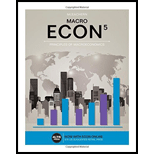Conditions that likely contributed to a credit crunch in 2008 include ________. A) capital shortfalls caused in part by falling real estate prices B) regulated hikes in bank capital requirements C) falling interest rates that raised interest rate risk, causing banks to choose to hold more capital D) increases in reserve requirements
31) Conditions that likely contributed to a credit crunch in 2008 include ________.
A) capital shortfalls caused in part by falling real estate prices
B) regulated hikes in bank capital requirements
C) falling interest rates that raised interest rate risk, causing banks to choose to hold more capital
D) increases in reserve requirements
32) Which of the following would not be a way to increase the return on equity?
A) Buy back bank stock
B) Pay higher dividends
C) Acquire new funds by selling negotiable CDs and increase assets with them
D) Sell more bank stock
33) If a bank needs to raise the amount of capital relative to assets, a bank manager might choose to ________.
A) buy back bank stock
B) pay higher dividends
C) sell bank stock
D) sell securities the bank owns and put the funds into the reserve account
34) Your bank has the following balance sheet:
Assets Liabilities
Reserves$50 millionDeposits$200 million
Securities50 million
Loans150 millionBank capital50 million
If the desired reserve ratio is 10 percent, what actions should the bank manager take if there is an unexpected deposit outflow of $50 million?
35) Assume that a customer deposits $1000 in her bank. Show in a T-account the effect of this deposit. If the bank is subject to reserve requirements (as some bank in other countries are), show in a second T-account the banks balance sheet indicating required and
Step by step
Solved in 4 steps









